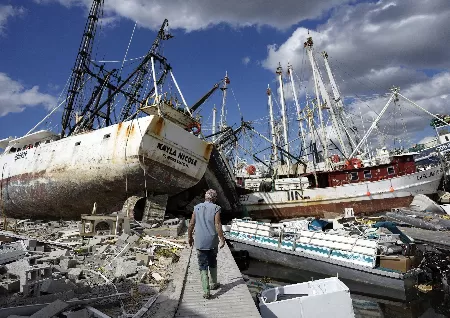The 2022 hurricane season shows why climate change is so dangerous

The storm season of 2022 will demonstrate why climate change is so risky.
Many Americans who live in hurricane-prone regions of the country began to notice that the summer had been unusually quiet in early September. Between June 1 and December 1, the Atlantic experiences 14 storms annually on average.
However, there had only been three storms as of August.
Many people were interested in what was happening.
Did this imply a welcome break from the record-breaking storms of recent years? After all, the overall number of storms in 2021 was an astounding 21. Additionally, there were so many storms in 2020 that forecasters ran out of alphabetic letters to give them names.
Federal forecasters, though, were adamant: the apparent lull in storm activity in 2022 meant little, they cautioned, because the quantity of storms does not necessarily indicate the severity of a specific hurricane season. One significant storm is all it takes to wreak havoc.
Additionally, the fall is when hurricanes are most active, so there was still time for a deluge of storms.
The Commerce Department, which houses the National Oceanic and Atmospheric Administration, is headed by Gina Raimondo. "I urge everyone to remain attentive as we enter the peak months of hurricane season," she added. NOAA revised its hurricane forecast, but only to note that there had been no change overall: individuals in hurricane-prone areas should continue to prepare for storms, and scientists continued to predict at least 14 storms in 2022.
When reflecting on the least active period of the Atlantic hurricane season, Jamie Rhome, acting director of the National Hurricane Center, said, "It was truly a type of terror and dread." "I thought people were letting down their guard,"
That fear was well-founded. By the end of September, Hurricane Fiona in Puerto Rico and Hurricane Ian in Florida had both made landfall in the United States and left more than 150 people dead.
Ultimately, the 2022 Atlantic hurricane season was one of the deadliest and most destructive in recorded history. According to estimates from the reinsurance giant Munich Re, with total losses of roughly $110 billion, it was the third most expensive hurricane season overall.
Some of the most perilous impacts of climate change on hurricanes are best illustrated by the hurricane season of 2022. The most recent climatic studies show that climate warming is not increasing the number of storms that develop in the Atlantic. Rather, a hotter Earth increases the likelihood that any storms that do materialise will be large and strong.
The same amount of storms occur each year, but they are more powerful, according to Rhome.
This increases the danger of storms.
The primary reason for deaths and damage from Hurricanes Ian and Fiona was flooding. The intense rain in Ian was a major contributor to the inland flooding. According to Rhome, "a warming environment contains more moisture and may thus generally produce more rain."
Storm surge, a wall of ocean water that storms drive onto land like an exceptionally high tide, was the other main cause of flooding. The more water a storm pushes inland, the stronger it is. According to Rhome, the storm surge gets greater as the sea level rises.
This year, it was clearly on display. Global warming has already caused sea levels in Florida, where Hurricane Ian made landfall, to rise by about 1 foot. The extra water made flooding worse.
Overall, the year 2022 served as a grim reminder that even relatively calm hurricane seasons can swiftly become deadly and that climate change increases the likelihood of the most severe storms.
Related queries to this article
- 2022 hurricane season
Read more articles and stories on InstaSity Trending Topics.